Notes on Recent Viewing, part three
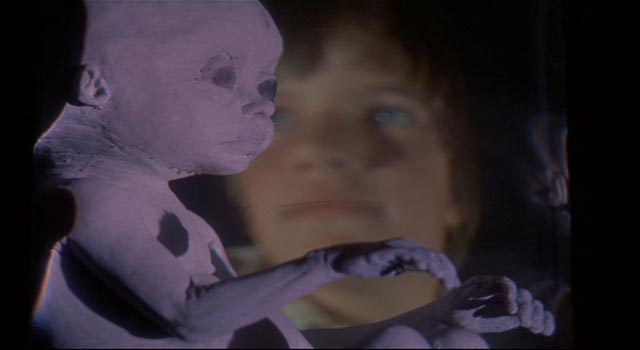
The Other (Robert Mulligan, 1972)
Tom Tryon, the actor, was a performer of limited abilities. Apparently he was awoken to his own dissatisfaction with his career while working on two films for the demanding Otto Preminger – The Cardinal (1963) and In Harm’s Way (1965). At some point, he began working on a novel in his downtime between set calls and in 1971 The Other was published. I would have been 16 when I first read the book – very appropriate, given the adolescent age of the twin protagonists, Niles and Holland Perry. I loved it. It was quite unlike anything I had read up to that time, its air of sun-drenched nostalgia belying the dark heart of the story. The horror was all internal and it was buried deep inside those two kids who spent their summer days playing in and around a New England farm in the ’30s.
The movie came out the following year, scripted by Tryon himself and directed by Robert Mulligan, whose previous film was Summer of ’42, another exercise in nostalgia (set during World War Two), which I had also seen at a perfect age (I harboured fantasies about Jennifer O’Neill for a few years after that); and of course he was best-known (and still is) for his (nostalgic again) adaptation of Harper Lee’s To Kill a Mockingbird (1962). The Other (1972) is a good and faithful adaptation of the book, although inevitably it loses a little something because film can’t quite replicate the interiority possible in a novel, particularly one which depends so much on careful narrative misdirection. But Mulligan does capture that strange combination of languid sunshine and violent darkness co-existing, aided greatly by the intense and completely unselfconscious performances of twins Chris and Martin Udvarnoky (their first and only appearances in a movie: Chris became an x-ray technician, Martin a massage therapist).
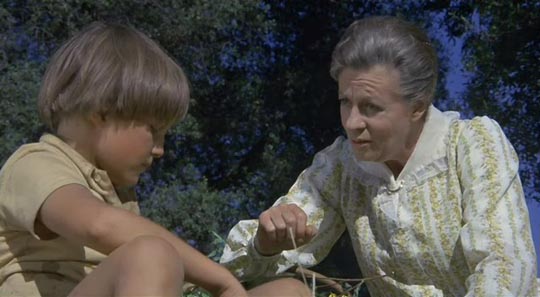
There are no stars in the film, just good actors, which works very much to its advantage in evoking that other time and place – Diana Muldaur as the boys’ mother, a gentle, distracted psychological wreck after the recent death of her husband; Lou Frizzell as the boys’ uncle; and most importantly, stage legend Uta Hagen in her feature film debut as the boys’ old world grandmother, whose deep love and otherworldly beliefs inadvertently pave the way for the darkness to enter their lives, with disturbingly tragic results. Mulligan wasn’t a stylist, just a solid storyteller with a knack for atmosphere and a skill with actors (particularly for drawing performances out of children) and the pleasures of The Other are very much the pleasures derived from Tryon’s novel.
Twilight Time’s limited edition Blu-ray is an improvement on earlier region 1 and 2 DVD editions, better capturing the warm, diffuse glow of the photography. The only extra is a music-only track highlighting Jerry Goldsmith’s score.
Invasion of the Body Snatchers (Philip Kaufman, 1978)
Philip Kaufman’s 1978 version of Invasion of the Body Snatchers (given a fine Blu-ray release by Arrow which includes all the region A special features plus several new ones, and which also – according to DVD Beaver – fixes an audio error in the North American release) is one of the best “re-imaginings” of a familiar movie ever made. It’s steeped in the paranoia of Don Siegel’s 1956 classic, but smartly updates and urbanizes it (with an excellent script by W.D. Richter). Set in San Francisco, and laced with as much humour as fear, it becomes both a satire on the glib, psycho-babble culture of the ’70s and a disturbing examination of individual isolation and insecurity within a crowded urban environment. One brilliant stroke is the casting of Leonard Nimoy as psychologist David Kibner, the authority figure who has just the right jargon to explain away the apparent epidemic of people who believe that those closest to them are no longer the people they’ve known and loved, despite the fact that they’re identical in every way. This, Kibner explains, is the result of increasing alienation, the pressures of city life which force people to withdraw, to disconnect … but Nimoy’s performance, a perhaps deliberate evocation of Spock (or merely a result of his limitations as an actor), creates uneasiness in the viewer: is he really just a glib, media-savvy “expert”, or has he too already been replaced? The film is full of these ambiguities, the edges of the frame giving glimpses of people who may just be peripheral passers-by or may actually be part of a vast conspiracy closing around the four main characters.
The region B Blu-ray from Arrow apparently uses the same transfer as the MGM region A edition, but it includes all the extras from that edition plus a bunch more. There’s a lot here to delve into about the making of the film, including a Philip Kaufman commentary imported from an earlier DVD edition; a discussion among writer Kim Newman and directors Norman J. Warren and Ben Wheatley (I confess I didn’t watch all 51 minutes because I found it slack and unfocussed); an interview with Annette Insdorf, an academic who has written a book about Kaufman (her enthusiasm can’t be faulted, but she really doesn’t say anything helpful or illuminating about the film); and a brief interview with Jack Finney biographer Jack Seabrook, discussing the original novel. The shared extras are four short featurettes covering the making of the film, the sound, special effects and cinematography.
I Come In Peace (Craig R. Baxley, 1990)
& Dollman (Albert Pyun, 1991)
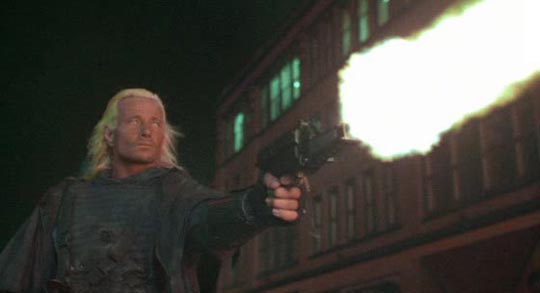
Two far less serious alien invasion movies from a later decade and recently released on Blu-ray provide entertainment if not much thematic depth. Craig R. Baxley’s I Come In Peace (aka Dark Angel) has Dolph Lundgren as a loose cannon cop paired up with a contrasting nerdy new partner (Brian Benben) as what appears to be gang war over drugs erupts in the city. But there’s something strange about the killings and it eventually turns out that there’s an alien drug dealer in Houston triggering overdoses in order to extract a trace chemical from dying brains which happens to be a powerful drug he sells back on his home world. It’s up to Dolph and Brian to bring the powerful killer down before he exterminates the entire human race …
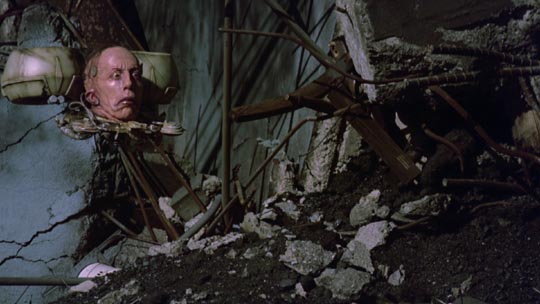
Made by Charles Band’s Full Moon Entertainment, Dollman is one of Albert Pyun’s better efforts (he’s probably best known for The Sword and the Sorcerer [1982] and Cyborg [1989]). Dollman stars Tim Thomerson (an incredibly busy character player – IMDb lists 200 credits in 39 years) as Brick Bardo, a loose cannon cop from an oppressive alien world, who tracks a vicious criminal to Earth. As the evil Sprug gets involved with the local gang, intent on taking over the planet with a stolen super-weapon, Brick gets involved with a single Mom who’s trying to clean up her run-down neighbourhood. Thing is, on this planet, Brick is the size of a kid’s action figure. Despite the low budget, Dollman has a script which is at times clever and even witty, an excellent use of grim urban locations, and the effects show a lot of imagination and ingenuity, making the movie far more entertaining than expected.
Ender’s Game (Gavin Hood, 2013)
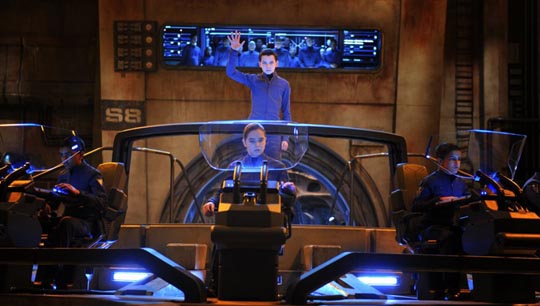
I’ve never read Ender’s Game, but several of my friends have and consider it a classic of the genre. Judging by Gavin Hood’s big-screen adaptation, it appears that Orson Scott Card was heavily influenced by Robert A. Heinlein – the movie, at least, seems like a mix of Heinlein’s juvenile space adventures and Starship Troopers (the alien enemy in Ender’s Game is a race of giant bugs), with a bit of The Last Starfighter (1984) thrown in. The movie is slick, quite well-designed (if occasionally derivative), and plays as a fairly effective juvenile adventure story. Ender Wiggin (Asa Butterfield) is the runt of his family, struggling to be accepted into an elite military program training kids to fight against the alien Formics, who attacked Earth decades earlier and were barely defeated. Although there have been no subsequent attacks, Earth’s military leaders are determined to hit back at the bugs’ home world and their best hope is young, agile, game-savvy kids.
When Ender reveals his innate combination of sensitivity and ruthlessness, he’s tagged by Colonel Graff (Harrison Ford) as potentially the leader they’ve been looking for. The main body of the movie concerns Ender working his way up through the training program, gaining skills and proving his command abilities among the other recruits. A series of escalating simulated war games leads to a final test, which the kids believe to be a trial run for the attack on the Formic home planet.
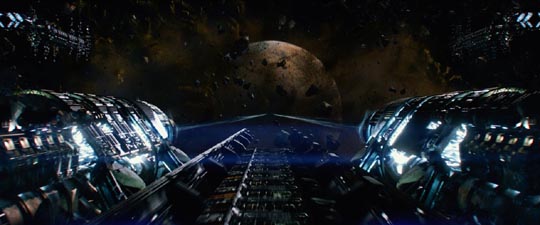
Visually slick, with some excellent effects work, the movie plays familiar notes with few surprises. Most of the young actors fare well in their standard roles (supportive sidekicks, angry rivals) and the adults in the cast (chiefly Ford and Ben Kingsley) manage not to take the movie away from the kids. But in the end, there’s a crucial element missing. This is a story about child soldiers ruthlessly manipulated by heartless adults into fighting a war which really need not happen. Yet the adults are treated softly and their final betrayal of the kids has no emotional weight.
As for Ender, in the end he remains a bit of a cipher. He’s desperate to be a part of the military program, and yet questions the need for violence. But then he’s ruthless in applying violence as a pre-emptive tactic to “prevent future violence.” When he finally realizes that he’s been used and has unwittingly committed a horrendous crime, you have to ask what he thought he was training for and why, when he believed it was just a simulation, he was okay with it, even though the supposed simulation was quite clearly a trial run for something real. Having proven himself capable of carrying out the mission, what did he expect would be asked of him next if not to carry out the actual mission? The movie attempts but fails to establish some kind of moral problem for Ender to navigate, but never manages to grasp the implications of that problem … in the end, it remains a slick adventure and nothing more.
Archer (Adam Reed, 2009-)
Having recently discovered the animated series Archer, created by Adam Reed, I’ve quickly watched the first four seasons on disk (a major binge with each season’s set). Design and animation are terrific and well-detailed, the voice talent excellent, and the fast-paced scripts packed with non-stop humour rooted firmly in well-written characters. Archer is the clueless, egotistical son of the woman who runs super-spy agency ISIS and fancies himself as the world’s greatest secret agent. One of the running gags is that, as arrogant and unperceptive as he is, he does actually get the job done. This is one of the most consistently funny and well-realized animated series to show up in some time.
*
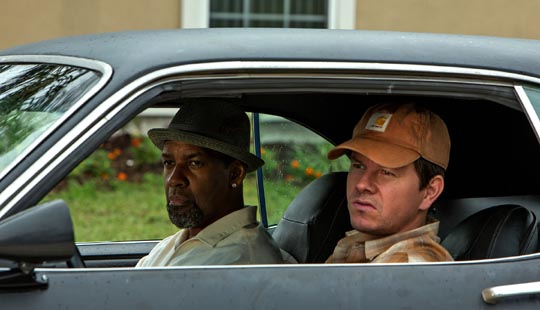
As for Baltasar Kormakur’s 2 Guns and James Mangold’s The Wolverine (both watched wearily during evenings after shooting interviews for a new documentary), there’s little to say. The first swamps its convoluted story of drug lords, renegade government agents and double- and triple-crosses under such thick layers of glib cleverness that it quickly becomes enervating, although Denzel Washington and Mark Wahlberg apparently had fun making it. The second, although a Marvel production, subscribes to the DC aesthetic of gloomy, compromised superheroes. Lumbering along for well over two hours, it spends (like The Dark Knight Rises) an inordinate amount of time on Wolverine struggling with the loss of his instant healing powers (and subsequent diminished strength) – is there anything less entertaining than a superhero who’s unable to kick butt properly?
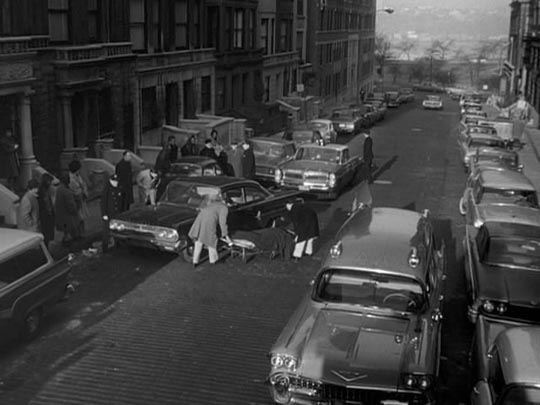
On the plus side, I’ve been making my way through season one of The Naked City (1958), the year before if blossomed into the best cop show of its own and many later eras. The half-hour episodes, shot on film, on location in New York (a major selling point emphasized in producer Bert Leonard’s voice over introduction to every episode), strain a bit towards making moral points (the majority were written by Stirling Silliphant), but manage often to achieve a gritty sense of realism, with some surprising moments of violence and adult situations (with Stuart Rosenberg and John Brahm doing much of the directing). The transfers in the RLJ Entertainment set are very contrasty, making some of the frequent night shooting almost impenetrably dark, but there’s a potent urban noir flavour which comes through strongly.
Comments
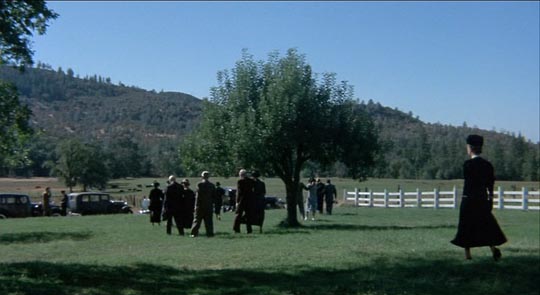
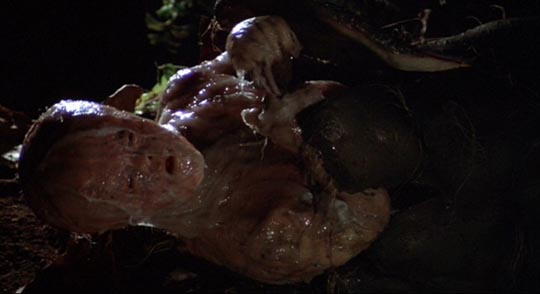
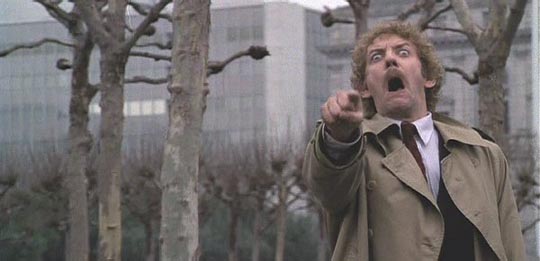
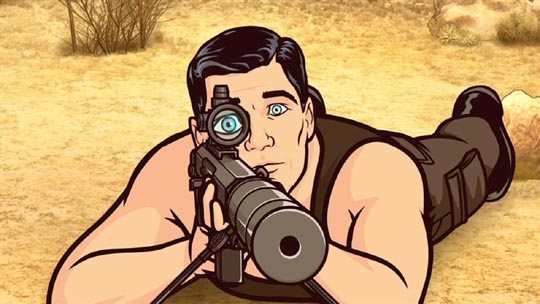
The Body Snatchers made my 200 Favorite Films list in 1980, back when I made such lists.
That’s a really big list. How often did you revise it? And did you rank the movies, or just list them alphabetically?